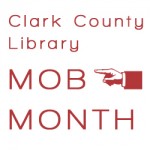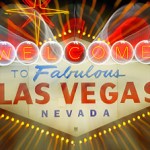
Las Vegas Mob — the Beginning and End
This post may contain affiliate links or Google Ads and we may earn a small commission when you click on the links at no additional cost to you. As an Amazon Affiliate, we earn from qualifying purchases. This is at no additional cost to you and helps with our website expenses.
The Las Vegas Mob has intrigued people for years. Las Vegas is one of the most popular vacation destinations for tourists around the world. Although of course, due to the very nature of what makes Las Vegas popular it was also a hotbed for criminal activity in the past.
The times of Las Vegas mob rule have long passed, but the story lives on, and what an incredibly fascinating story it is.

The Las Vegas Mob, also known as the “Chicago Outfit” or the “Bugs and Meyer Mob,” was a powerful and infamous organized crime syndicate based in Chicago, Illinois. In the mid-20th century, the Las Vegas Mob played a significant role in the development of Las Vegas, Nevada, as a major tourist and gambling destination.
Origins of the Las Vegas Mob
The origins of the Las Vegas Mob can be traced back to the early 1900s, when a group of organized crime figures, led by Al Capone, controlled much of the illegal activity in Chicago. In the 1930s and 1940s, the Las Vegas Mob expanded its operations to include gambling and other illicit ventures in Las Vegas.
One of the key figures in the Las Vegas Mob was Benjamin “Bugsy” Siegel, a notorious gangster and hitman who was responsible for much of the organization’s expansion into Las Vegas. Siegel was known for his flamboyant lifestyle and his ambitious plans for the city, which included the construction of the Flamingo Hotel and Casino, the first luxury resort on the Las Vegas Strip.
However, Siegel’s grand plans came at a high cost, and he was eventually killed by his own associates in 1947, reportedly due to his mismanagement of the Flamingo project. Despite Siegel’s death, the Las Vegas Mob continued to thrive in Las Vegas, with many of the city’s major hotels and casinos falling under their control.
Las Vegas Mob through the Decades of the 1900s
In the 1950s and 1960s, the Las Vegas Mob faced increased scrutiny from law enforcement and the public, as authorities worked to crack down on organized crime. Despite these efforts, the Las Vegas Mob remained a powerful force in the city for many years, with many of its members continuing to operate in the shadows.
In the 1980s and 1990s, the Las Vegas Mob began to lose its grip on the city, as legal gambling and corporate ownership of casinos became more prevalent. Today, the Las Vegas Mob is a shadow of its former self, and while organized crime still exists in the city, it is no longer the dominant force it once was.
Despite its tumultuous history, the Las Vegas Mob remains a significant part of the city’s history and cultural identity. It is remembered as a time when the city was run by a shadowy network of criminals and corrupt officials, and serves as a cautionary tale about the dangers of unchecked power and greed.
Las Vegas Mob and Bugsy Siegal
What few people know is that one of the real pushers for the development of the Las Vegas Valley into a tourist destination is Bugsy Siegal, one of the most famous American mobsters of them all. He had ties to the Genovese Crime family who based themselves in New York City. Without this man, Las Vegas would probably not be the tourist hotbed that it is nowadays.
Frank Rosenthal and the Las Vegas Mob
Frank Rosenthal is another one of the famous Las Vegas Mob members. He even has a movie based on him about his time in the city. Much of his time in the city was spent running a number of Casinos that were owned by the Chicago Mafia. This was quickly put a stop to near the end of the 70s when he was denied a license to continue running them.
Frank Rosenthal was the subject of an assassination attempt in Las Vegas when somebody had placed a bomb in his car; he was able to escape, however. He was finally forced to leave Las Vegas when law enforcement began cracking down on people known to have ties to organized crime. The last house he lived in can still be viewed in the area.
The Chicago Outfit and the Mob in Las Vegas
Much of Vegas was controlled by the famous Mafia family; the Chicago Outfit, part of the group that Frank Rosenthal belonged to. They first become known on the Las Vegas scene in 1931 when John Roselli took control of their operations there. During his time the Chicago Outfit built up its casino empire which was raking in substantial amounts of profits, both through the use of traditional gambling activities as well as the introduction of sports betting.
Donald Angelini was the final enforcer in Las Vegas hired to try to protect the mob’s illegal gambling profits. It wasn’t to be though after the law enforcement clamped down on their ways of obtaining money. They finally lost their grip in 1993.
“Skimming” from the Casinos
Much of the profit of the mob came from “skimming.” This basically means that they illegally took gambling profits in order to avoid paying taxes. Organized fixing of the games was also commonplace which allowed them to increase the money generated.
It is said that much of the money that was skimmed during the Las Vegas Mob rule was placed into a building known as the “Old Neighborhood Italian American Club” which was founded by Angelo LaPietra. It is also said that this private club also plays host to a number of old-timers from the mob world.
The End of the Mob
Las Vegas Mob rule finally ended once and for all in the 1980s when the city came out with “The Black Book” which barred all people suspected of having ties to organized crime from being able to enter any casino within the city.
Las Vegas Mob Museum
If you want to find out more about the Las Vegas Mob story then I suggest paying a visit to The Mob Museum located on Stewart Avenue. The exhibits here detail the complete story from both the mobster’s perspective and the law’s side. It even plays host to the actual wall that played a key part in the Valentine’s Day Massacre.




